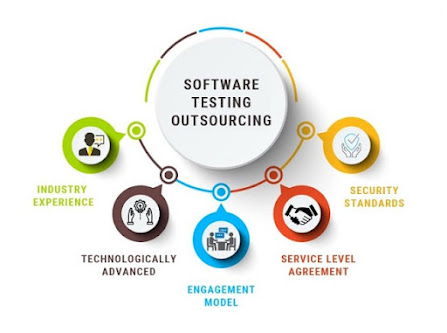A Comprehensive Guide to Stages of Software Testing: Manual vs. Automated
The process of assuring software quality can be divided into two stages in the world of software testing services: manual and automated testing. Manual testing entails human testers thoroughly inspecting the program, running test cases, and validating its functionality, usability, and overall user experience. This method has the benefit of adaptability and intuitive judgment, but it is time-consuming and prone to human mistakes. Automated testing, on the other hand, uses specialized software tools and scripts to run specified test cases, making it useful for repetitive jobs and regression testing. Although automated testing excels at identifying code changes and running large test suites quickly, it may lack the contextual understanding and creativity that manual testers give. Striking a balance between these two stages is often the key to delivering robust and reliable software testing services. In this blog, we will delve into these different types of software testing to help you understand their significance and how they fit into the development process.
Manual
Testing
What is
Manual Testing?
Manual
Testing is a traditional method where testers execute test cases without the
use of automation tools. Human testers simulate user actions and interactions
with the software to evaluate its behavior, usability, and performance. This
approach allows for real-world scenarios to be tested and is often used for
exploratory and ad-hoc testing.
Advantages
of Manual Testing:
Exploratory
Testing: Manual
testers can think creatively, exploring various scenarios that automated tests
may miss.
Usability
Assessment: It
assesses the software's user-friendliness and ensures it meets the end-users'
expectations.
Early
Testing: Manual
testing can begin even before the complete development phase, making it
valuable for initial checks and feedback.
Disadvantages
of Manual Testing:
Time-Consuming: Manual testing can be
labor-intensive, making it time-consuming and expensive, especially for
repetitive tasks.
Limited
Repetition: It's
challenging to repeat the same tests frequently and consistently without
introducing errors.
Automated
Testing
What is
Automated Testing?
Automated
Testing involves using specialized software tools to perform tests
automatically. Test scripts and scenarios are created to mimic user
interactions, data inputs, and expected outcomes. Automated testing is
especially valuable for repetitive and regression testing.
Advantages
of Automated Testing:
Reusability:
Automated test scripts can be reused for multiple test cycles, reducing testing
time and effort.
Accuracy:
Automation eliminates the human factor, reducing the risk of errors in testing.
Speed:
Automated tests can be run simultaneously on different environments,
significantly speeding up the testing process.
Disadvantages
of Automated Testing:
Initial
Setup: Creating and maintaining automation scripts can be time-consuming and
require technical expertise.
Not Suitable
for All Scenarios: Automated testing is less effective for scenarios that
require human intuition, such as usability and exploratory testing.
Now, let's
explore specialized types of software
testing within the Manual and Automated testing categories:
Manual
Testing Types
Black Box
Testing
Definition: Black Box Testing is a type of
manual testing where testers evaluate the software's functionality without
having any knowledge of its internal code structure. Testers focus on inputs
and expected outputs to verify if the software behaves correctly.
Use
Cases: Black Box
Testing is ideal for functional, integration, and acceptance testing. It helps
identify discrepancies between the expected and actual system behavior.
White Box
Testing
Definition: White Box Testing, also known as
Glass Box Testing, is a manual testing approach where testers have access to
the internal code and structure of the software. Testers design test cases
based on the software's code, algorithms, and data structures.
Use Cases: White Box Testing is crucial for
ensuring code coverage, identifying vulnerabilities, and verifying that all
paths in the code are tested.
Automated
Testing Types
Unit
Testing
Definition: Unit Testing is a type of automated
testing where individual components or units of code are tested in isolation.
Developers often write unit tests to ensure that each component functions
correctly.
Use Cases: Unit Testing is essential for
validating the correctness of individual functions, methods, or classes within
the codebase.
System
Integration Testing
Definition: System Integration Testing is an
automated testing approach that evaluates the interactions between different
modules or components of the software system. It ensures that integrated parts
work seamlessly together.
Use Cases: System Integration Testing helps
identify issues related to data flow, communication between components, and
integration points in a multi-module software system.
Conclusion:
Software
testing is a critical part of the software development lifecycle, and
understanding the various types of testing methodologies is essential for
delivering high-quality software products. Both Manual Testing and Automated
Testing have their advantages and disadvantages, and choosing the right
approach depends on the project's requirements and constraints. Additionally,
specialized testing types like Black Box Testing, White Box Testing, Unit
Testing, and System Integration Testing play pivotal roles in ensuring that
software meets its intended objectives and functions reliably. By embracing a
comprehensive testing strategy, development teams can mitigate risks and
deliver robust software solutions to their users.



Comments
Post a Comment